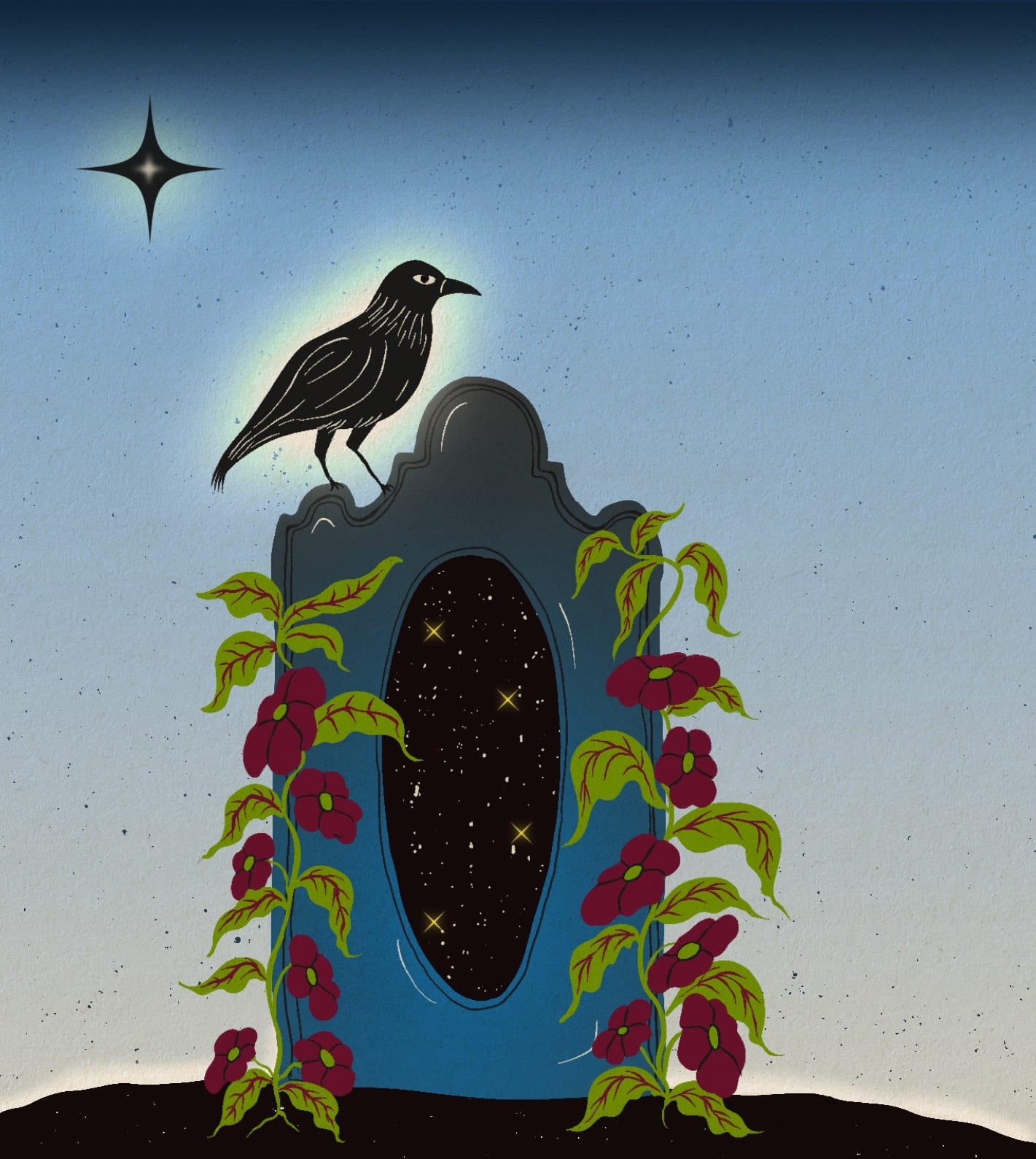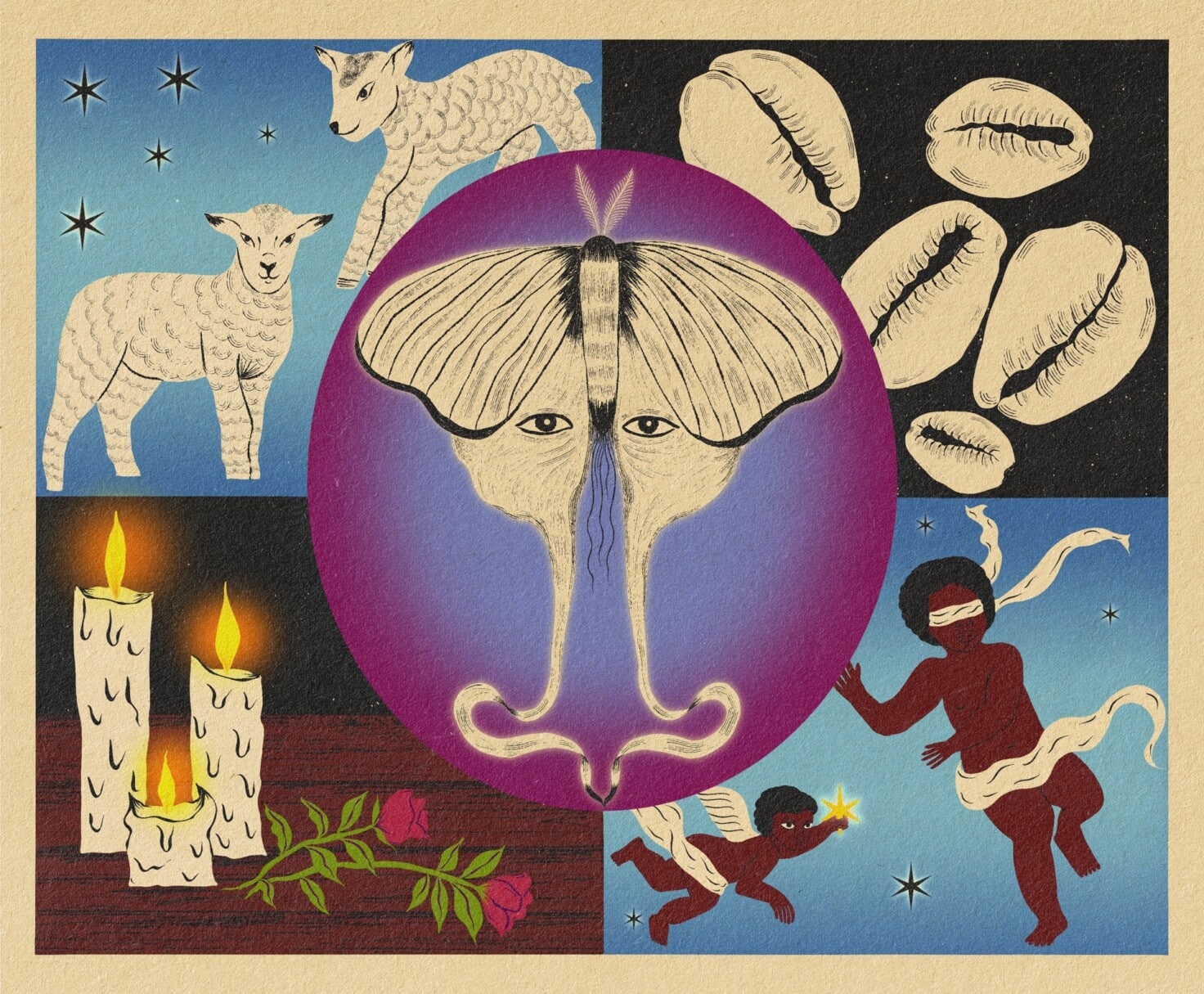No matter the setting or the genre, they exist between cuts and in music, echo through sound design or in digital effects signifying other planes of existence. A key sequence of his latest film, Sinners (2025), might be the strongest evocation of this idea. The film’s opening narration positions music as something with healing, spiritual power; it conjures apparitions of people who are dead and people who are yet to be born, all dancing and playing music together in the same juke joint. The film sees music as a kind of living memory, a modern vehicle for oral history. That history isn’t just contained in lyrics but also in the playing itself, and how that musical style is passed down through generations even as the genre shifts.
From the eulogistic Fruitvale Station (2013) through legacy blockbusters such as Creed (2015) and Marvel franchises such as Black Panther (2018–), all of Coogler’s films feature some kind of communion with the spirits of the deceased. Coogler does this through in-camera trickery, editing, and framing, as well as with the arc of each film’s narrative. As Coogler put it to me in an interview,1 he’s interested in humanizing people and cultures that aren’t always afforded such a sense of lived experience. After all, who has less of a voice than those who have passed on?
While creating a connection with the deceased would become a subtle thematic thread throughout Coogler’s subsequent feature work, it’s the entire premise of Fruitvale Station, his feature film debut. It takes place over a day in the life of a real person, 22-year-old Oscar Grant (played by Coogler’s longtime collaborator Michael B. Jordan), just before his killing at the hands of transit police. Filmed in grainy 16-mm handheld shots by cinematographer Rachel Morrison (who would later work on Black Panther), Coogler’s film seeks to give Grant a voice, looking at his family life and the quotidian details of his final day that headlines and statistics didn’t reveal.
His breakout film, the legacy sequel Creed, follows its wounded main character, Adonis Creed (Jordan again). Adonis struggles with the impulse to become a boxer and connect with his absent and now deceased father while also wanting to create a legacy of his own. Even 10 years after its release, there’s profound power in the moment when Coogler uses the language of film—simple cuts and provocative composition—to bring Adonis closer to his father, finding a kind of spiritual transcendence through sport.
While this echoing sense of loss is never spoken of aloud (thankfully), the two main characters, the rookie Adonis and the veteran Rocky Balboa (Sylvester Stallone in one of his most soulful performances), connect through it. An early scene depicts Balboa tending to two graves: his wife Adrian’s and his friend Paulie’s. He pulls up a chair, unfurls a paper, and talks with them about his day, updating them on the most mundane happenings. Balboa’s own reckoning with loss is a quiet and powerful reflection of Adonis’s journey.
An early moment in Creed continues Coogler’s immortalizing of those real and fictional. Adonis sits in a media room and throws a YouTube video on a projector that shows his late father fighting Rocky Balboa. It’s grainy archive footage from the 1979 movie Rocky II, a moment that now feels like a glimmer of memory for the actor Carl Weathers. The phantasmal effect of this clip extends beyond the film, prompting audiences to remember a character who once lived. Adonis stands and begins to throw punches and duck them in time with the fight as the image projects over him. But rather than imitate his father, he battles him, trying to anticipate his movements, in a moment expressive of his complicated relationship with a man he never knew but whose shadow looms large.
Later, in a more climactic bout, as Adonis is knocked unconscious by his opponent, little flashes of Adonis’s life, moments already witnessed across the course of the film, are intercut with him slowly dropping to the mat face-first. The most powerful moment of the quick montage is also its quietest: a simple cut to archive footage of Apollo ducking and weaving with a smile on his face. After this, Adonis suddenly rises to his feet “like a man possessed,” as one of the match commentators describes. Adonis is never able to actually speak to Apollo, of course, but still connects with him in one moment of transcendence. Through an elegant wielding of the archive, his father’s spirit reaches him. Sinners does something similar before the death of one of its lead characters, Stack (again, Jordan), who sees his partner and their child reach for him from the afterlife, outside of the frame.


